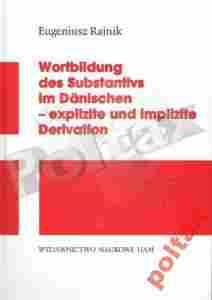Wortbildung des Substantivs im Dnischen

Aukcja w czasie sprawdzania nie była zakończona.
Cena kup teraz: 25.99 zł
Użytkownik poltax
numer aukcji: 2424104708
Miejscowość Warszawa
Zostało sztuk: 2
Wyświetleń: 20
Koniec: 15-07-2012 15:31:25
Dodatkowe informacje:
Stan: Nowy
Okładka: twarda
Rok wydania (xxxx): 2012
Kondycja: bez śladów używania
Język: inny
Zestaw: sama książka
Przeznaczenie: do gimnazjum, do liceum, dla dorosłych,
